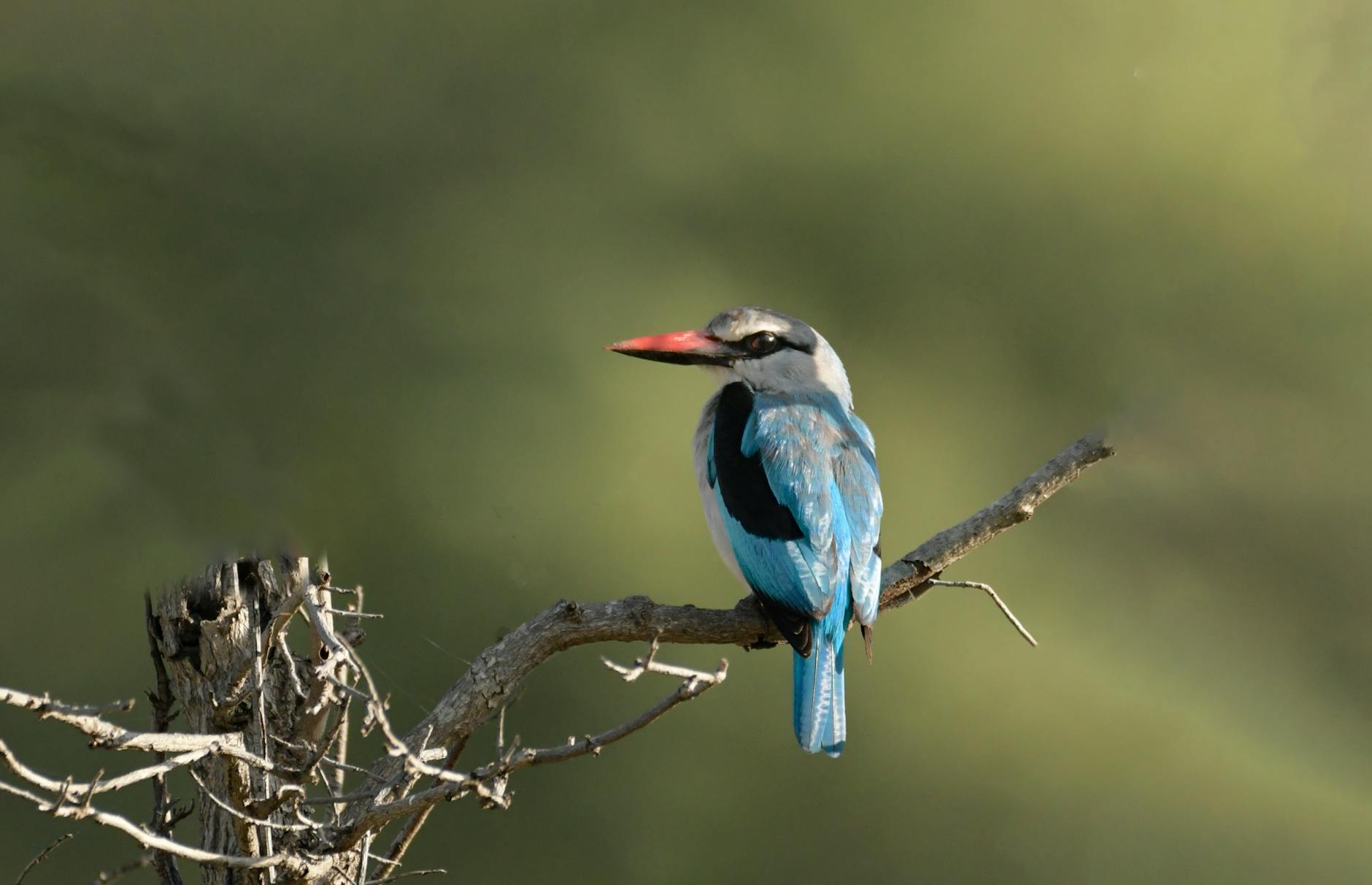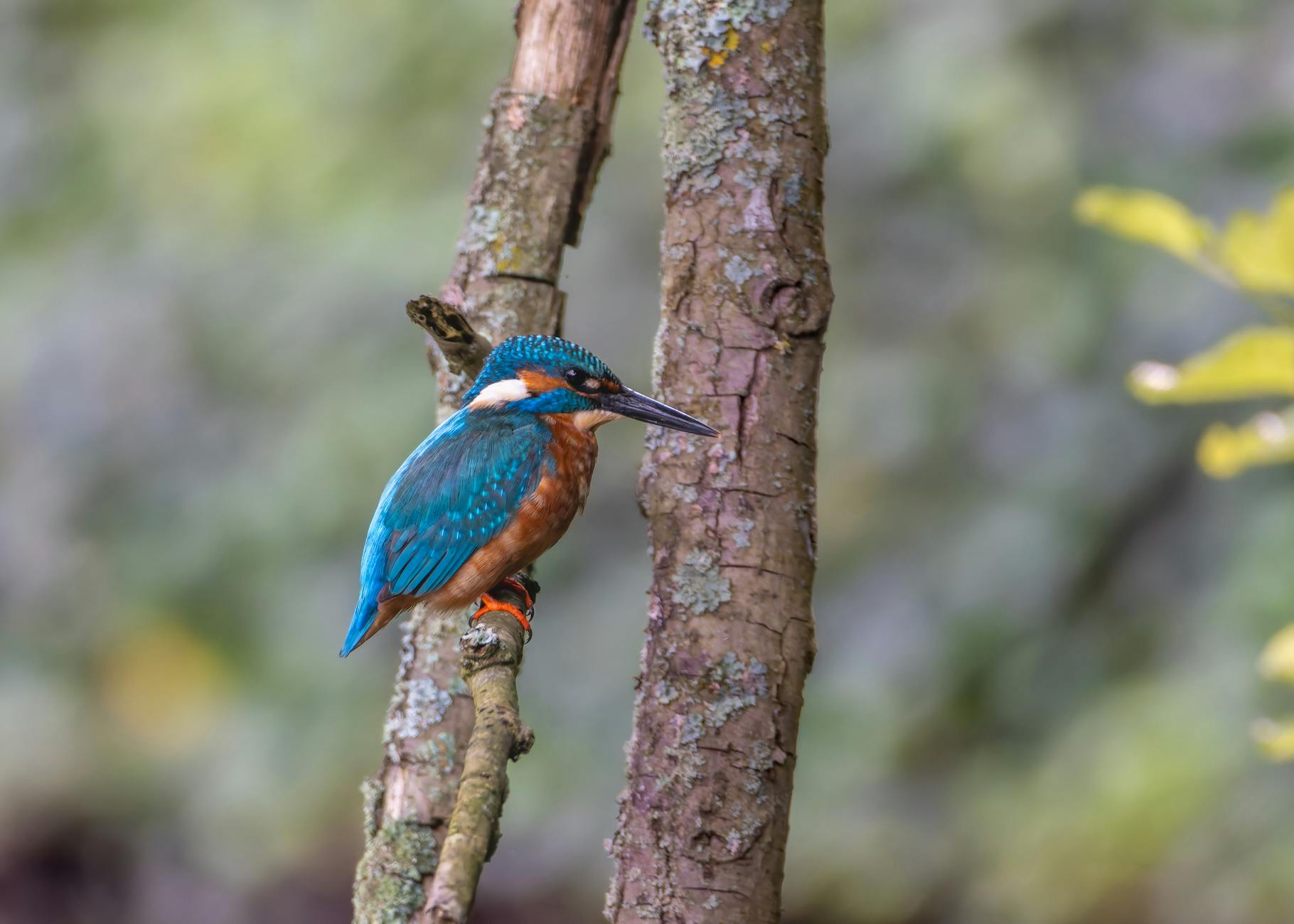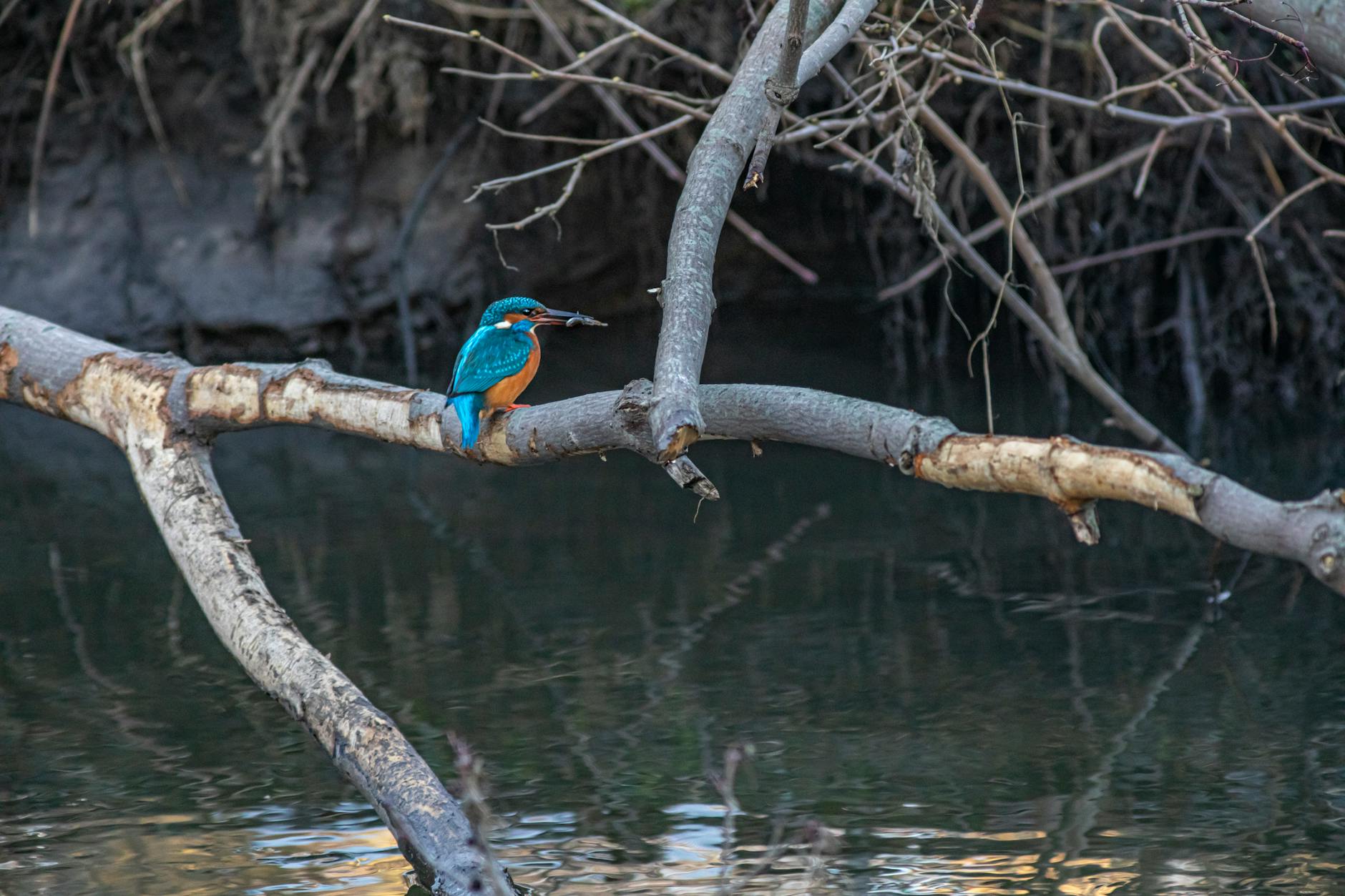Why Are Kingfishers So Colourful? Uncovering Their Bright Feathers
Kingfishers are a true wonder of nature, captivating us with their vibrant feathers. But have you ever wondered why they’re so colourful? The secret lies not just in pigments, but in the fascinating interplay of light.
In this post, we’ll uncover the science behind their bright plumage and explore how these birds create their dazzling colours. From structural coloration to the unique features of their feathers, you’ll gain insight into what makes kingfishers stand out in the bird world. Get ready to see these stunning birds in a whole new light!
Understanding Kingfisher Plumage
Kingfisher plumage is a fascinating subject, showcasing not just vibrant colours but also a unique mechanism of colour production. Understanding the types of colouration in their feathers gives insight into what makes these birds exceptional in their natural habitats.
The Role of Colouration in Feathers
Feathers derive their colours through two primary processes: pigment-based and structural colouration.
- Pigment-based Colouration: This involves the presence of pigments, which absorb certain wavelengths of light and reflect others. For example, the orange hues seen on the kingfisher’s breast come from specific pigments in the feather structure. To learn more about how pigments work in kingfisher feathers, check out this resource on pigments in kingfisher plumage.
- Structural Colouration: Unlike pigments, structural colours arise from microscopic structures in the feathers that interfere with light. This causes specific wavelengths to be reflected, resulting in vibrant blues and greens. Notably, the kingfisher’s blue feathers are actually brown at their core; their brightness comes from this optical phenomenon. For a deeper dive into structural colours and how they affect perceptions of the kingfisher, view this informative post.
Both forms of colouration contribute significantly to how we perceive these remarkable birds.
Importance of Bright Colours
Bright colours in kingfishers are not just beautiful; they play several critical roles in their survival and reproduction.
- Mate Attraction: Vivid colours often signal health and vitality to potential mates. The brighter a male kingfisher’s feathers, the healthier it appears, making it more attractive. This relevance is highlighted in studies showing that brighter colours correlate with success in finding mates. For more on this topic, visit this article on the importance of bright colours in the animal kingdom.
- Species Identification: Bright plumage helps kingfishers recognize their own kind amid diverse habitats. This is crucial for mating and social interactions.
- Camouflage: While it may seem counter-intuitive, certain colours can also provide camouflage against predators when viewed from specific angles or distances. This dual role of coloration enhances both mating success and survival.
- Territorial Displays: Bright colours can serve as warning signs to other birds, marking territory and deterring intruders.
Understanding the importance of colouration offers a glimpse into the ecological and evolutionary pressures that shape these dazzling birds. For a broader understanding of why birds are colourful, this resource on why birds are colourful provides further insights.

Photo by Frans van Heerden
Structural Colouration Explained
Kingfishers are not just pretty to look at; their vibrant feathers are the result of a fascinating process known as structural colouration. This intriguing phenomenon occurs when light interacts with the microscopic structures within feathers, creating colours that are often more vivid than those produced by pigments alone. Understanding how this works can help us appreciate the beauty of these birds even more.
How Light Interacts with Feathers
When light hits a kingfisher’s feathers, it encounters tiny structures that affect its path. These structures are typically in the form of layers or microscopic cavities. The physics behind this is based on wave interference.
- Reflection and Refraction: As light waves bounce off these microscopic structures, certain wavelengths are reflected while others are absorbed. This interaction results in stunning, iridescent colours. For instance, when light strikes a kingfisher’s feather, the blue wavelengths are reflected vastly due to the feather’s unique layering, while the other colours are absorbed. This effect is similar to how oil on water creates shimmering rainbows of colour.
- Scattering: The feather’s surface scatters light, which can also enhance colour perception. This phenomenon is especially important for kingfishers. Their blue feathers are not inherently blue; they appear this way due to the way light behaves around their structures. This interaction is explained further in this article on structural coloration in bird feathers.
Understanding these interactions highlights why kingfishers’ colours seem to change depending on the light and angle of view, making them even more captivating in flight.
Examples of Structural Colouration
Kingfishers aren’t the only birds showcasing this striking type of colouration. Several other species rely on similar principles to dazzle observers.
- Peacocks: The iridescent feathers of peacocks demonstrate structural colouration prominently. The microscopic arrangement of their feather layers reflects light in such a way that various colours appear depending on the angle of the viewer. More about this can be found in the Wikipedia article on structural coloration.
- Hummingbirds: Many species of hummingbirds possess throat feathers that exhibit vibrant colours. These gorget feathers are the result of both structural colouration and some pigment, creating a spectacular display of light that is especially beautiful in direct sunlight. To understand more, take a look at this resource on how birds make colourful feathers.
- Starlings and Ducks: Common birds like starlings and ducks also employ structural colouration. The sheen on their feathers is a result of similar microscopic structures that scatter light. These effects are not just beautiful; they serve critical functions in mating and social interactions as seen in various bird species.
These examples show that structural colouration is a widespread phenomenon in the avian world, contributing to the brilliance and diversity of our feathered friends.
Pigmentation versus Structural Colours
The fascinating world of kingfishers reveals that their stunning colours stem not just from pigments but also from the way light interacts with their feathers. This section examines the brown base of kingfisher feathers and the vital role structural colour plays in how we perceive their bright hues.
Brown Base of Kingfisher Feathers
At first glance, you might think kingfisher feathers are simply blue or green, but the truth is more intriguing. The underlying structure of these feathers is inherently brown. This may seem surprising, but it’s essential to grasp how structural colouration transforms their appearance.
- Pigment-Based Reality: The brown coloration comes from melanin, a pigment found in the feathers. This pigment absorbs various wavelengths of light, giving the feathers their foundational colour.
- Playing with Light: When light strikes the feathers, something remarkable happens. The microscopic structures within the feather reflect and scatter light in such a way that it creates vibrant colours. This optical effect is why the feathers appear blue or green rather than brown. For a detailed explanation of this phenomenon, see why kingfishers look blue.
- Examples in Nature: This principle isn’t unique to kingfishers. Other birds showcase similar examples, where their feather colours arise from structural colouration rather than pigments. For instance, the vibrant hues of peacocks and hummingbirds also stem from complex interactions between light and feather structure.
In short, while kingfishers have that eye-catching blue, it’s a clever illusion stemming from their brown base and the science of light reflection. Understanding this interplay invites us to appreciate not only the beauty of these birds but also the remarkable processes that create it. For more insights into the science behind bird feather colours, explore this resource on how birds make colourful feathers.

Photo by Siegfried Poepperl
Behavioural Implications of Colouration
Kingfishers are renowned for their vibrant colours, and these hues influence their behaviour significantly. The colours of their feathers serve key roles in mating, camouflage, and predator avoidance, ultimately impacting their survival and reproductive success.
Attracting Mates
The striking colours of kingfishers are crucial during mating rituals. Males often perform elaborate displays in response to their vibrant plumage, signalling their health and vitality to potential partners. Brightly coloured males often outshine their drab counterparts, making them more desirable to females.
- Mating Displays: When courting, males may exhibit their colours through aerial displays, prominently showcasing their feathers. As observed in the Belted Kingfisher, these birds engage in dramatic flights and even present gifts like fish to attract mates.
- Visual Signals: Bright colours serve as visual cues that indicate reproductive fitness. Research has detailed how females are more likely to choose mates with intense colours as they signal good genes, enhancing the chances of successful offspring. This phenomenon is not unique to kingfishers; it represents a common theme observed across various bird species.
Camouflage and Predation
While vibrant colours are often associated with attraction, they can also play a subtle role in camouflage. Kingfishers have evolved to balance visibility with the need to evade predators.
- Camouflage: The colours of their feathers blend well with their natural environment. This dual-function means that although their bright colours attract mates, they can also help the birds remain hidden from potential threats like larger predators.
- Hunting Strategies: When hunting, the bright colours of kingfishers may provide an edge by helping them blend into their aquatic surroundings, particularly when perched near water bodies. This camouflage allows them to surprise their prey, such as small fish or insects, enhancing their hunting success.
Understanding the behavioural implications of colouration offers deep insights into the lives of kingfishers. Their vibrant plumage is not merely for show; it serves critical functions that shape their reproductive strategies and survival tactics.

Photo by Fiam So Iam
Conservation and the Future of Kingfishers
Kingfishers’ stunning colours depend on their healthy habitats. Yet, these habitats face multiple threats that can jeopardise both kingfishers and their vibrant plumage. Understanding these challenges is vital for their conservation.
Impact of Habitat Loss
Habitat loss poses a significant threat to kingfisher populations worldwide. As urban areas expand and natural environments deteriorate, kingfishers struggle to find suitable nesting and hunting grounds. Some of the key factors contributing to their habitat destruction include:
- Urbanisation: The development of cities and towns leads to the destruction of wetlands and riversides where kingfishers thrive. This not only limits their nesting sites but also diminishes the availability of fish, their primary food source. The Belted Kingfisher is particularly sensitive to human activity, especially during the breeding season.
- Pollution: Contaminated water bodies affect fish populations, disrupting the kingfishers’ food chain. Pollution from agricultural runoff and industrial waste can render environments hostile for these birds.
- Deforestation: The removal of trees along riverbanks reduces perches and nesting locations for kingfishers. Without these vital structures, their chances of survival and reproduction diminish.
The implications for their vibrant plumage are dire. Bright colours not only have social functions but also indicate the health of their environment. As habitats change, so too do the conditions that produce those stunning hues. Studies have linked habitat degradation to a decline in plumage brightness, impacting mating success and survival rates. For further reading on habitat threats, check this article about habitat loss and conservation issues.
Future Research Directions
To better understand kingfishers and their colouration, several research areas warrant exploration:
- Plumage Variation: Researchers should investigate how environmental factors and habitat types influence the vibrancy of kingfisher feathers. The relationship between local ecology and plumage colours can reveal insights about adaptation and survival.
- Ecological Impacts of Colours: Studies on how the colours of kingfishers relate to their ecological roles would provide clarity. For instance, investigating how colouration aids in thermoregulation or predator avoidance could deepen our understanding of these birds.
- Conservation Strategies: There’s a need for research focused on developing effective conservation strategies that protect kingfisher habitats. Finding ways to mitigate the impacts of pollution and urbanisation should be a priority for ecologists.
- Evolution of Colouration: Understanding the mechanisms behind colour diversification in kingfisher species could unravel evolutionary paths. The complex plumages of various bird species present an exciting avenue for study, particularly concerning how colours evolve in response to ecological pressures.
Kingfishers are not only beautiful; they are indicators of healthy ecosystems. Protecting their habitats and furthering research efforts are crucial for ensuring the future of these colourful birds.

Photo by Erik Karits
Conclusion
The striking colours of kingfishers are a marvel of nature, revealing the intricate relationship between light and feather structure. Their vibrant plumage plays essential roles in attracting mates, aiding in camouflage, and displaying territory.
As stewards of their habitats, we must appreciate these birds and advocate for the conservation of the environments that make their colours possible.
What other wonders of nature have you noticed in your local wildlife? Share your thoughts and keep exploring the beauty around you.










